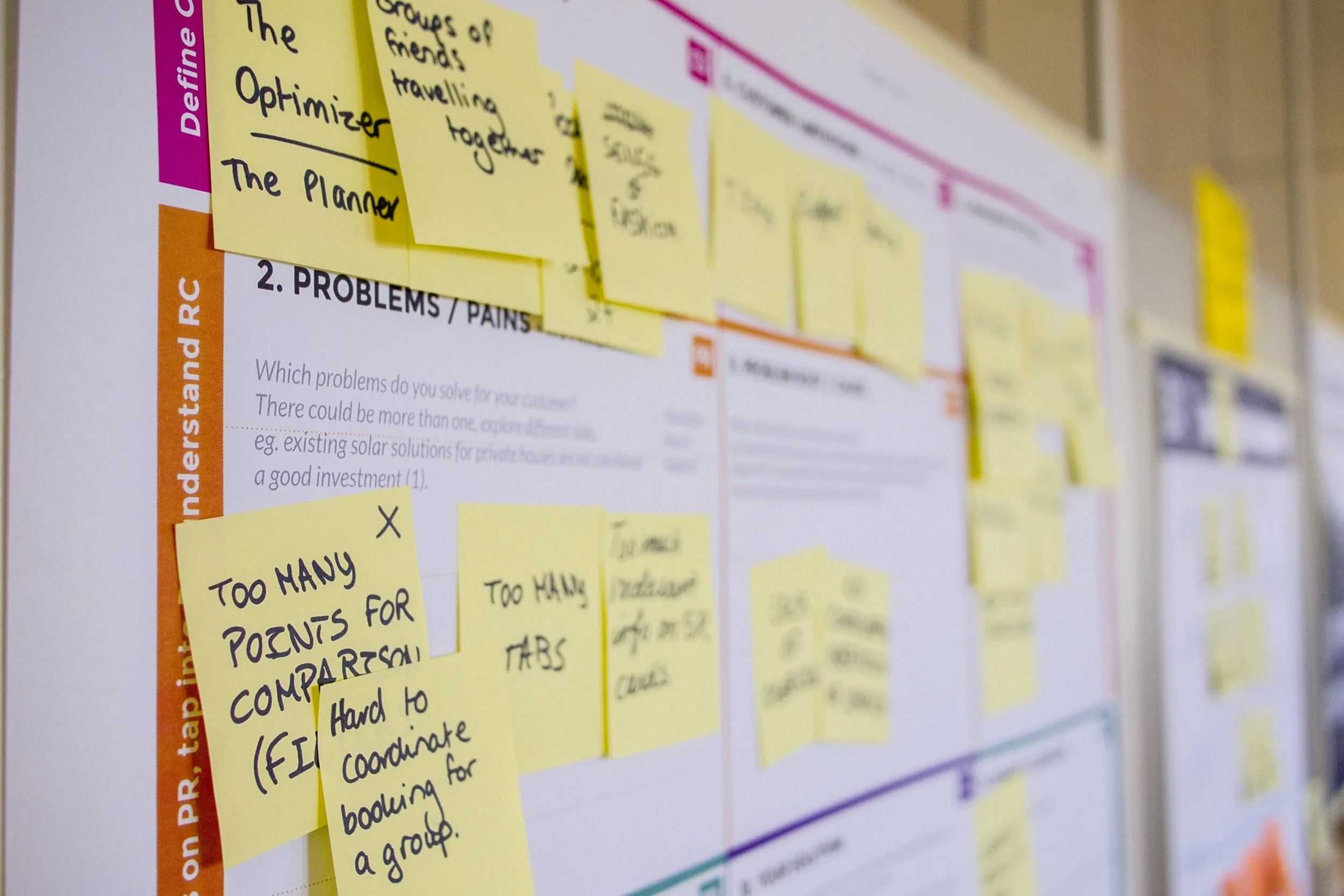We recently received a question from a student who had graduated with an undergrad degree at an acclaimed state school, and is currently working full time as a marketing coordinator.
Hoping to hone their skills in UX and eventually enter the UX industry, they asked what kind of program they should consider. From Google UX certificates to bootcamps to masters degrees, there are a lot of options.
I was hoping I could hear directly from UX professionals to point me in the right direction. What kind of program would you recommend?
This is a question we receive often. Here at Slide UX, our team has a range of educational backgrounds and a lot to say about the learning options available in UX.
Why are there so many options for UX education?
Although the field of User Experience hardly existed 20 years ago, it’s now among the most highly in-demand skills. Not only do we see this in our consultancy’s business metrics, we also see it in the press:
LinkedIn lists UX design as one of the top 5 in-demand skills as of 2020.
Glassdoor included UX design in their list of best 50 jobs to have in 2021.
Hired.com reports a 289% increase in requests for UX interviews in 2020.
Do I want fast, broad exposure to the UX space?
If you’re seriously considering UX as a career, a bootcamp program may allow you to delve in quickly and deeply, especially when compared to degree programs which can involve multi-year commitments.
UI Designer Ian Herbst said, "I enjoyed my bootcamp experience, and it prepared me well in a very short amount of time (3-4 months, roughly). As with any other fresh bootcamp graduate, I still have an immense amount to learn and skills to hone, but it gave me all the experience I needed to be able to transition comfortably into this position with Slide UX.”
Am I sure I’m interested in UX?
If you’re not ready to commit to the price tag or time investment of longer programs, consider NN/g training. NN/g, founded by industry forefathers Jakob Nielsen and Don Norman, offers training ranging from Weeklong Seminar Series to 1-hour talks. They also offer a well-respected UX Certification program.
How does the program stay current?
A challenge for curriculum in any fast-progressing space is staying up to date with the latest market demands. At Austin Community College, a board of industry advisors contribute to the curriculum, and the professors work in the field which helps to ensure that curriculum is current and relevant.
With any program, ask how the curriculum stays up to date, and what changes they have made recently to accommodate changes in market expectations.
Could I earn while learning?
Education can be expensive, and especially after you’ve already paid for college, you might not want (or be able) to take on additional debt. Full-on associate degrees and masters programs can keep candidates out of the workforce for 1-2 years. Working during the day can narrow your options, but many students either need or prefer to be earning income while learning UX. Many Sliders believe that finding a way to work and learn concurrently can give you the best of both worlds.
Securing an apprenticeship, an internship or even an entry-level position in a closely related field may offer the exposure you want. After 2 years, you will have real-life experience that makes you more marketable, and possibly even a long-term opportunity with the same employer.
The workplace can offer a combination of real-life experience, community, and mentorship. Not to mention, they pay you (not the other way around!) With on-the-job training, your education may not be as complete or well-rounded as what one gets from a curated course. Still, this is how many of today’s design leaders like Slide UX founder Brant Young got their start.
Do I have the discipline to go it alone?
UX Design Coordinator Ken Hill tried various learning methods including a bootcamp, Austin Community College, and the Google Certificate. For him, independent learning won out as the most efficient. He found Google Certificate program to be affordable, and says that if done correctly, it will result in having a portfolio with three projects at the end.
On the flip side, UX Strategist Alex MacDuff appreciated the structure and accountability of his multi-track “code school” program. For him, the group environment “validated the things I had already learned on my own, and helped me build a portfolio of school projects. Both of these can be done on your own, if you are dedicated and motivated. But if you need some external guidance or a little push, a program can be a good option.”
How will I get the practical, real-world experience employers expect?
Many Sliders agreed that the key to getting hired is finding real projects to work on. UX Design Coordinator Ryan Fette, who took part in the Designlab bootcamp, pointed out that academic programs can skew towards theory over practice.
Why does this matter?
Few real-world projects afford the time and budge to do “all the right steps”.
Real projects allow you to really understand what it will be like to work in the field, and to find the parts of the process that you’re best suited for.
The UX entry level is crowded, and (perhaps frustratingly) many employers will select candidates whose portfolios “make up for” their lack of experience with strong real-work examples. Ken said that almost all of the friends he made in his UX bootcamp had to work on a pro-bono project to actually stand out and get real-world experience that the bootcamp lacked.
Some programs incorporate client work, but candidates must be aware that work infused inside a program is typically unpaid work designed to leverage the curriculum of that program. Students may not face the same “real world” limitations and expectations with these projects that they will on real, paid projects in the field.
Ryan suggests soliciting trial projects with local nonprofits or city departments. It may catch them off guard, but they’re often willing to allow students to exercise their skills on new or existing products, especially if it means no charge to the org. Of course, a client who isn’t paying will not behave like a typical client because they didn’t seek the services, and the stakes are lower.
Am I ready to work in a multi-member design team or multidisciplinary project team?
UI Designer Ian Herbst knew his first job in UX would likely not be a solo affair: he’d be on a team. He says that his Bootcamp with Memorisely helped him learn how to work well in a multi-member design team. By collaborating with others, he learned what his strengths and weaknesses were.
UX Strategist Alex MacDuff pointed out that some programs even include multiple tracks, creating opportunities to work on a group project with developers. Alex found his capstone project, working in a multi-discipline group, to be invaluable.
Am I connected to a UX community?
UX Design Coordinator Ken Hill agreed that one reason bootcamps and degree programs stand out over a certificate is because they provide valuable networking.
Some programs go beyond community into mentorship, with mentors who know participants personally and look out for their development and hiring opportunities. This is especially common with small college programs.
A program isn’t the only way to find community in the UX space. Groups like UXPA (User Experience Professionals Association), IXDA (Interaction Design Association), and Austin’s Fresh2Design can be great ways to meet others with similar goals to talk shop.
Will my portfolio stand out amongst a sea of bootcamp candidates?
After participating in the Designlab bootcamp, UI Designer Ashley Villagonzalo found that for some programs, a portfolio is part of the work you do together. While it’s great to check that off the list, your portfolio projects may be structured the same as everyone else in the program, making it harder to stand out in the crowded entry-level UX market.
Additionally, there’s a very real effect Ashley called “Bootcamp Stigma”. Some employers don’t consider Bootcamp candidates because as Ian pointed out, even the sharpest candidates leave the programs with “an immense amount to learn and skills to hone.” Real world experience can help satisfy employer uncertainty about a less experienced hire.
What are my local options?
Because of all the attention on UX in recent years, local community colleges are beginning to take note, especially in tech hubs like Austin. When available, these programs can be a very practical and affordable option.
Senior UX Strategist Lindsay Winters went back to school to start her career in UX, earning an Associate’s Degree at ACC (Austin Community College). She sings the program’s praises, and has heard great things about the program since: “The program they’ve developed sounds fantastic and I believe that they do have a class now where they work with a client and get that type of project experience. There’s also a certificate program; not sure how much time that’ll save, but it is an option to consider.”
Resources to Consider
Some of the advice Sliders shared from their own UX job search experience:
Reach out to mentors on adplist.org to get valuable feedback from UX professionals. It’s free and they can offer job-advice, portfolio critiques, etc.
If you’re a recent grad, check out developforgood.org. They pair you with an organization and a team. You also get access to a UX mentor throughout your project.
Peruse angel.co or ideatelabs.co; they regularly post Jr UX positions and internships.




